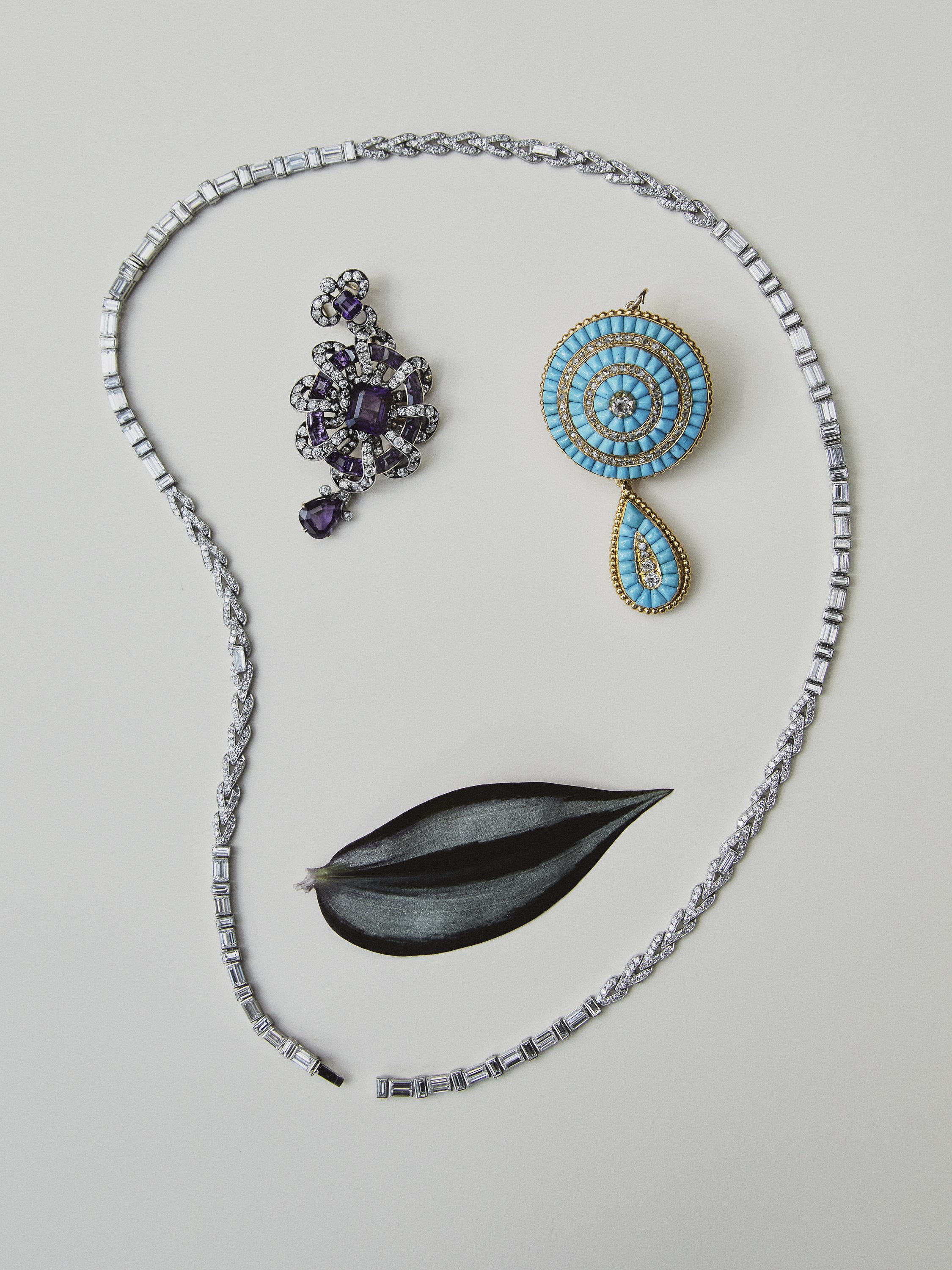Victorian
High Victorian
After the discovery of the mines of South Africa in 1867 diamonds became the pre-eminent element in formal jewellery, worn in larger quantities and by more women than ever before. The stones are massed together into stars, crescents, bowknots, feathers, Greek key, floral and leaf patterns for head and bodice ornaments, while single stones, large and small are linked together into rivières for the neck.
In Rome the return to the designs of the Etruscans, Greek and Romans reviving the techniques of filigree and granulation, pioneered by Castellani, was so successful that this became an international fashion. The desire for novelty drove jewellers to create jewels in an ever increasing range of themes expressing cultural and sporting interests.
Early Victorian
Early Victorian divides into two categories. There is the formal parure richly mounted with precious stones in naturalistic designs of leaves, flowers and bull rushes.
Cheaper alternatives are available in amethysts, aquamarines and topazes in impressive but light filigree and stamped gold settings.
Secondly, enamelled gold jewellery inspired by the art of the Middle Ages and the Renaissance, associated with the masters Froment-Meurice and Lucien Falize in Paris, and by Carlo Giuliano in London expresses the nostalgic spirit of Romanticism. Bracelets assume great importance, especially as tokens of sentiment.

